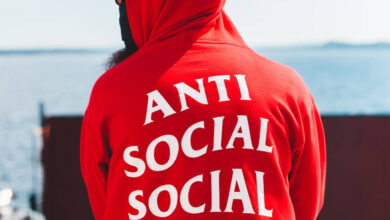How Is Social Media Influencing Vaping Culture?
From perfectly framed clouds of vapour with trendy vape pens to counter-discourse on vaping, social media is a big player in the world of vaping. Platforms like Instagram, TikTok, and Twitter have become hotspots for vape enthusiasts to share their passion.
With influencer endorsement, commercial marketing, and user-led discussions, social media is actively shaping how people see products like disposable bars or vaping pods. On the one hand, you can find the picture-perfect #vapinglife, while on the other hand, there are honest discussions about health.
This blog post explores how different social media platforms are influencing vaping culture today and discusses the rising trends in the vaping world.
Vaping Across Different Social Media Platforms
Social media has become a hub of discussion, engagement, and support for vape users. Here’s why different social media platforms are popular among vapers:
- Instagram: Instagram is the most popular platform for vapers, mainly due to its aesthetic appeal. Vape enthusiasts show their disposable vapes, e-liquid flavours, and e-cigs, promoting a creative and aesthetic #vapelife. Influencers and brands also leverage it for marketing through lifestyle associations, product features, and a sense of community.
- YouTube: YouTube offers a different kind of engagement for vapers. Popular content formats on YouTube include tutorials, reviews, and in-depth discussions about vape gear, coil building, and e-liquid mixing. It allows for longer-form content, catering to vapers interested in the technical aspects of vaping.
- Twitter: In the vaping world, Twitter is about discussion, discourse, and debates. Vapers discuss experiences, share public health information, and advocate or criticise vaping regulations.
Major Trends About Vaping On Social Media
Social media has vastly influenced the vaping landscape, fostering new trends and shaping users’ perceptions. Following are some significant trends in vaping culture, as seen on social media:
The Rise Of Vaping Aesthetics
Social media- Instagram in particular- has morphed vaping into a visual phenomenon. From curated reels to hashtags like #vapelifestyle, aesthetics have become a big part of vaping culture.
Vapers have become artists, sharing photos and videos of their vape setups, tricks, flavour combinations, and even DIY e-liquids. A study suggests that flavour-related posts are shared widely among vapers on Twitter. Thus, flavours and visuals have become vital ways for brands to promote themselves.
Power Of Influencer Marketing
Influencers are the central characters in the social media marketing of vaping and e-cigarettes. They work with vape brands to promote their products and reach a wider audience.
Vaping companies usually work with influencers who have a niche community of like-minded people. These Influencers showcase new products, share experiences, and contribute to a sense of community. The followers trust these reviews and suggestions, which is exactly what companies are banking on. This makes influencer marketing a persuasive tool for brand promotion.
User-Generated Content
Social media has empowered vapers to become content creators. Platforms like Instagram and YouTube are flooded with organic content, where vapers share their personal journeys. Besides influencer marketing, user-generated content has also become an essential marketing avenue.
Occasionally, a vaping trick, a unique flavour combination, or a particularly creative cloud-blowing technique goes viral, spreading like wildfire across social media. These viral moments entertain, generate buzz, and influence trends within the vaping community.
Besides fun and entertaining content, you can also find user-led conversations. There are discussions about policies and personal experiences on Twitter (now ‘X’). Hashtags like #vapingisnotsmoking tend to spread awareness of how vaping can be a potential key to quitting smoking.
Public Health Discourse And Counter Narrative
Social media isn’t just about vape tricks and flavour reviews. It also allows individuals to share their own positive and negative experiences. It leads to the emergence of counter-narratives, challenging the often idealised online portrayals of vaping.
Platforms like Twitter have become forums for debates and discussions. Here, people can talk about proposed vaping regulations, the latest research findings, and the practices of the vaping industry itself. This open discourse allows for a more informed understanding of vaping, both its potential benefits and drawbacks.
Wrapping Up
Social media has become the vape lounge of the digital age, shaping how people perceive and experience vaping. From the #vapelife aesthetics of Instagram to the in-depth discussions on YouTube and Twitter, each platform offers a unique window into the vaping world.
Influencer endorsements and targeted ads paint an alluring image, while user-generated content offers organic feedback. However, special media isn’t just about blowing perfect vaping rings. Counter-narratives provide a balanced conversation about the potential downsides of vaping.
The future of vaping on social media is a dynamic mix of innovation, marketing strategies, and evolving public discourse. As technology advances and research progresses, social media will undoubtedly remain a key player in shaping the ever-changing landscape of vaping culture.


